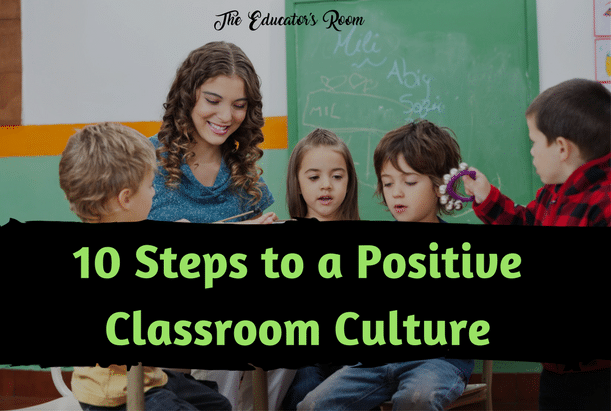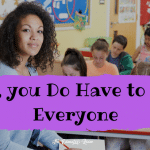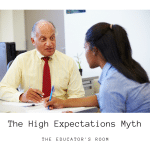Creating a positive classroom culture is hard work. We are living in a time of high anxiety and our students can feel that tension. Many no longer feel safe or welcomed in their communities just as many no longer feel safe expressing themselves. As educators, it is our responsibility to create classroom environments that are safe, inclusive, and authentic.
[bctt tweet=”It is our responsibility to create classroom environments that are safe, inclusive, and authentic” username=”EducatorsRoom”]
Here are a few simple steps to build a classroom culture that supports learners, not just learning.
- Smile-Be positive and calm. Smile with warmth. Let students know you love them and you want to be with them. It seems obvious, but staying happy takes work. Fake it til ya make it. Though it might not seem that important, your attitude determines everyone’s day.
- Learn names-Memorize the correct pronunciation and spelling of every student’s name. Call them by name. Names are powerful and personal symbols of self, so using names sends a powerful message of care and respect.
- Make students learn each other’s names-Insist that students call each other by name and address each other with the same respect they want to receive. I give a quiz to ensure students pay attention to every other student in the class, not just their friends or seat partners.
- Greet every student, every day-Stand at your door. Say hello. Say welcome. Smile. The best way to ensure a good day is a positive greeting. This also gives you an opportunity to assess whether any student is upset or in need of a few moments of personal attention. I usually have those students stay at the door with me and speak with them briefly before class begins.
[bctt tweet=”Great Every Student At the Door” username=”EducatorsRoom”]
- Use a random name generator-We are all guilty of bias. It is an unavoidable human quality, yet everyone deserves an equal opportunity to be put on the spot. Selecting students randomly avoids unintentional bias and increases engagement. I use cards or sticks if tech is not an option, but mostly I use Class Dojo.
- Make connections-Find opportunities to connect material to student’s lives, cultures, and experiences. Even the act of using examples students recognize can have an enormous impact.
- Offer choices-The choices don’t need to be big or important, they merely need to be real. When students have choices, they feel empowered. Choices that are meaningless to adults: whether to write on the front or back of a paper, whether to write in ink or pencil, whether to complete even or odd problems, these choices, and the praise you deliver with them, matter to students. Simple choices and simple words can make them feel validated, intelligent, and important.
- Explicitly teach code switching-Teach them the difference between classroom language and home language. Make your language expectations clear so everyone understands what qualifies as disrespect or inappropriateness. Treat breaches of language etiquette as teachable moments rather than confrontations.
- Be genuine-Be you. Share yourself with your students and allow them to share themselves with you. Have fun, tell personal stories, be silly, and get sidetracked occasionally to talk about whatever comes up. Admit your mistakes and ask for help from your kids.
- Establish comfortable spaces in your classroom-Make the room you learn together in a pleasant place to be because Maslov precedes Bloom. Experiment with flexible seating, hang motivational posters, let students decorate, fill your room with books, toys, and other tools of learning. Learning is industriously messy work and students are more likely to engage in it when they are physically comfortable.







